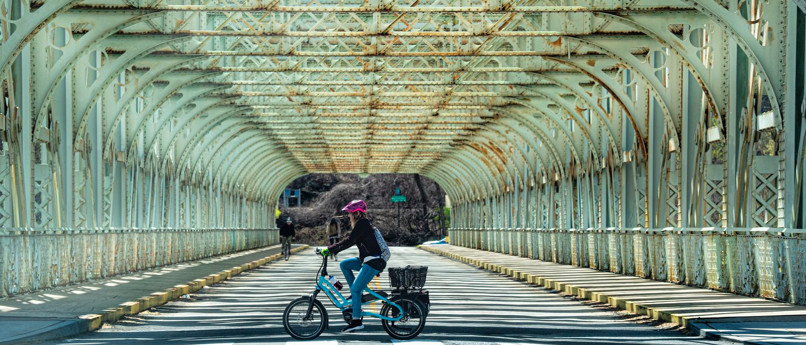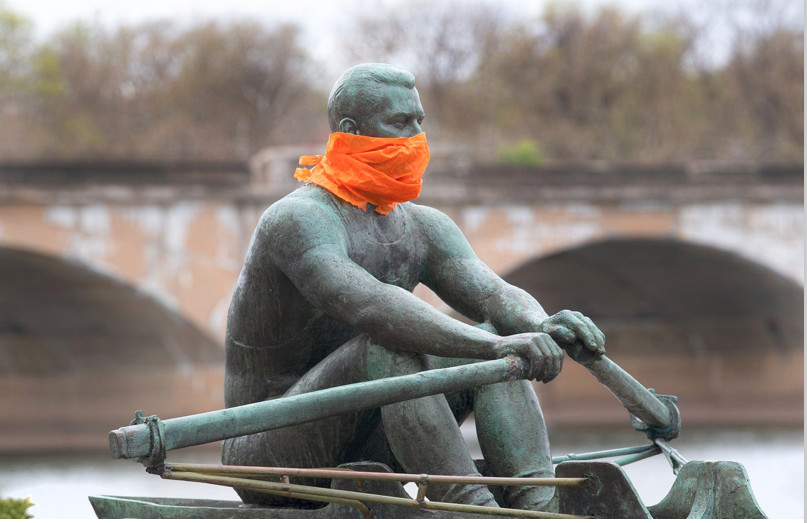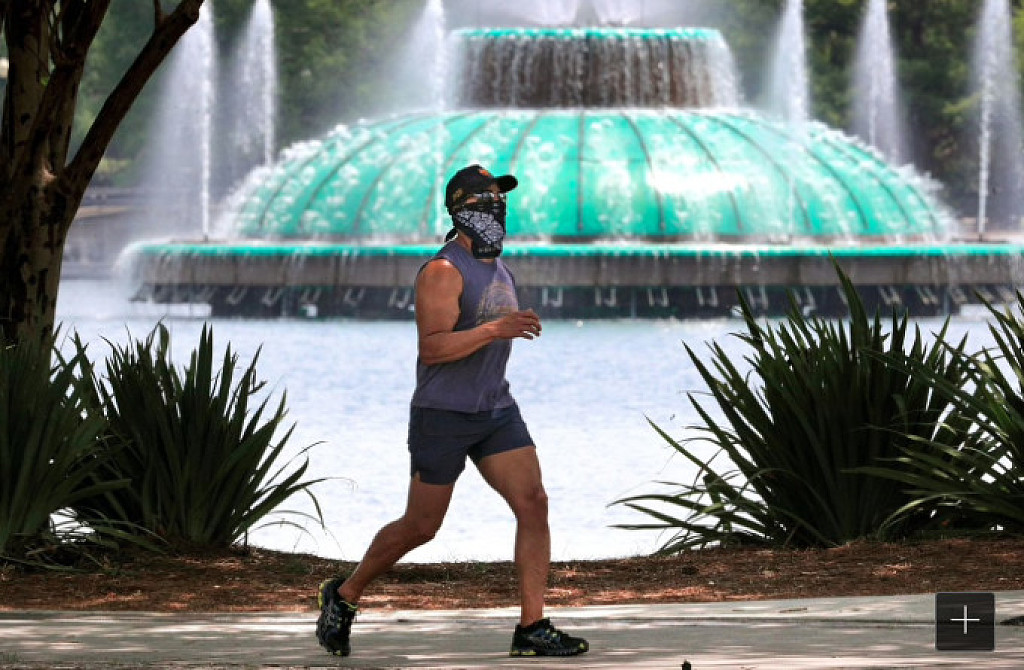Running News Daily
Running News Daily is edited by Bob Anderson. Send your news items to bob@mybestruns.com Advertising opportunities available. Train the Kenyan Way at KATA Kenya and Portugal owned and operated by Bob Anderson. Be sure to catch our movie A Long Run the movie KATA Running Camps and KATA Potato Farms - 31 now open in Kenya! https://kata.ke/
Index to Daily Posts · Sign Up For Updates · Run The World Feed
Should I wear a face mask while running and exercising outside?
The Centers for Disease Control and Prevention (CDC) recommends wearing a face mask in public.
But what if you’re zooming past people on a bike or running on an empty trail? Many people have asked if they still need a mask. Let’s face it: they’re not the most comfortable accessory when sweating your way through a workout.

Here’s what you should know to stay as safe as possible while exercising outdoors.
Should I wear a mask while exercising outdoors?
The answer depends on where, and potentially when, you’re exercising.
The CDC recommends wearing a mask in public settings where it’s harder to stay away from people, like grocery stores and pharmacies. Currently, the rule is to maintain at least six feet between yourself and others. If you’ve jogged along Kelly Drive or in Wissahickon Valley Park, you know that’s often impossible, especially on sunny Saturdays.
“If you’re in an area where you know you’re going to be crossing paths with a lot of other people, you 100% should be wearing a mask, but in general, try to avoid those situations,” says Patrick Davitt, the director of the University of Sciences’ Health Science Program.
Davitt suggests finding less crowded areas and avoiding peak hours. As an avid runner currently training for a 100-mile race, he runs almost daily, often still outside, and without a mask during early morning jaunts.

“As long as you’re running alone in an unpopulated area, you can keep the mask at home,” says Davitt. “But if you see someone in your oncoming path, cross the street well in advance — it’s just common courtesy as a runner.”
Avoid people, even if you’re wearing one
Make the effort to hop off the sidewalk or swerve into the grass. As a runner or biker, playing the game of coronavirus Frogger is extra important since others may not see you whizzing by from behind.
This applies even if you’re wearing a mask. Experts say that masks don’t replace social distancing, which remains one of the most important ways to slow the spread of the virus.
“Keeping that six feet of distance from someone else is more important than anything else,” says Bucks County Health Director Dr. David Damsker.
If wearing a mask, remember it won’t make you invincible. You may also need to adapt your workout, but don’t let this discourage you.
“Running and being outdoors is good for you, so you don’t want to stop,” says Davitt. “Just understand that exercising with something that’s covering your mouth, that you’re not used to wearing, is likely to change how your workout looks, and that’s okay.”
How to exercise with a mask
The obvious change: wearing a mask makes it harder to breathe. You may need to decrease the volume and intensity of your workout.
“Airflow will be restricted, so your body will have to work harder to perform at the same rate as you would without the mask, and that becomes exponentially true as the intensity goes up,” says Davitt. “The faster and harder you’re breathing, the more the mask is going to affect that.”
Listen to your body. This is extra important if you have underlying conditions, like asthma. Don’t be afraid to slow down and take breaks. Davitt says now may be a good time to back off a little anyway, especially if you’re prone to pushing yourself to your limit.
“If you go too hard, that can compromise your immune system, which you don’t want right now,” says Davitt.
To get used to exercising with a mask, practice inside. Wear it for at least an hour and get moving. Five minutes of jumping jacks is a great place to start.
“If it’s irritating your face, you need to find a way to reposition it or find another mask that works better for you,” says Dr. Alexis Tingan, assistant professor of physical medicine and rehabilitation and sports medicine at the University of Pennsylvania.
Make sure your mask is comfortableComfort is crucial so that you don’t adjust your mask once outdoors — which, experts emphasize, is essential to avoid spreading the virus. It’s challenging enough to avoid fidgeting with a mask when you’re not sweating it out, so take time to find the right fit.
One of the most comfortable Face Masks on the market is being made by UjENA Fit Club. These are made from high quality four-way stretch fabric. These Mindful Face Mask is what lifetime runner Bob Anderson is wearing all the time while in pubic.
A proper fit will also help you avoid a rash. If the mask starts to bother you, address it immediately.“Running has an analgesic effect, so your pain sensitivity gets temporarily dulled” says Davitt. “But it’s just like avoiding a blister — if you continue, you might be limited from going outside at all the next day.
”You may have to head home earlier than planned. If you’re far from home in a crowded area, Davitt says to act strategically. Can you use your shirt as a barrier to readjust the mask? Or shrug your shoulder to your ear to reposition?
Avoid touching the mask with your hands.As the weather gets warmer, working out with a mask becomes less appealing. Choose a style that’s optimal for exercising.“I’d advise against the ear-loop medical masks. They can get soggy,” says Tingan.
“While the CDC recommends cotton for indoor situations, there’s no set guidelines on exercising. Cotton is going to be incredibly uncomfortable and you’ll become much more likely to touch the mask.”
Cotton absorbs sweat, but it’s not moisture-wicking. The sweat stays in the fabric, often leaving you soaking wet by the end of a workout. Finding a breathable material is key. If you’re shopping online, look for the words “breathable” and “microfiber.”
“You’ve got to work with your resources. The mask prevents droplets from going out into the air, so anything is better than nothing,” notes Tingan. “But if cotton makes your workout miserable, then you’re less likely to wear it correctly, or to wear a mask altogether.”
You may want to find an alternative for exercise. Tingan recommends balaclavas and buffs.
Balaclavas cover the whole head and neck; look for a style that covers the mouth and nose. Avoid wool, and look for microfiber, an absorbent, fast-drying material.
A buff is a tube of stretchy material that you can pull up over your nose and mouth. Its name comes from one of the main brands that makes them; they’re also sometimes called “neck gaiters.”
“Balaclavas and buffs have elastic and a close fit, so they’re also less likely to move around when you’re running,” says Tingan.
If you go the cotton route, consider wearing a sweatband around your forehead. This helps trap sweat to prevent you from wiping your face.
Virtual exercise and races
Own a treadmill, stationary bike or bike trainer? If you’re anxious about exercising outdoors, it may be worth checking out trending virtual exercise apps like BitGym, Virtual Runner, and Zwift allow runners and bikers to explore different courses, often simulated from those around the world. Some apps, like Zwift, allow you to also compete with others.
“I can be cycling alongside someone from Sweden or Brazil, or running down the road and see this cartoon avatar trying to pass me,” says Davitt of Zwift. “It’s making the indoor workout more fun, and it brings back a sense of camaraderie that’s missing while we’re all social distancing.”
Login to leave a comment




